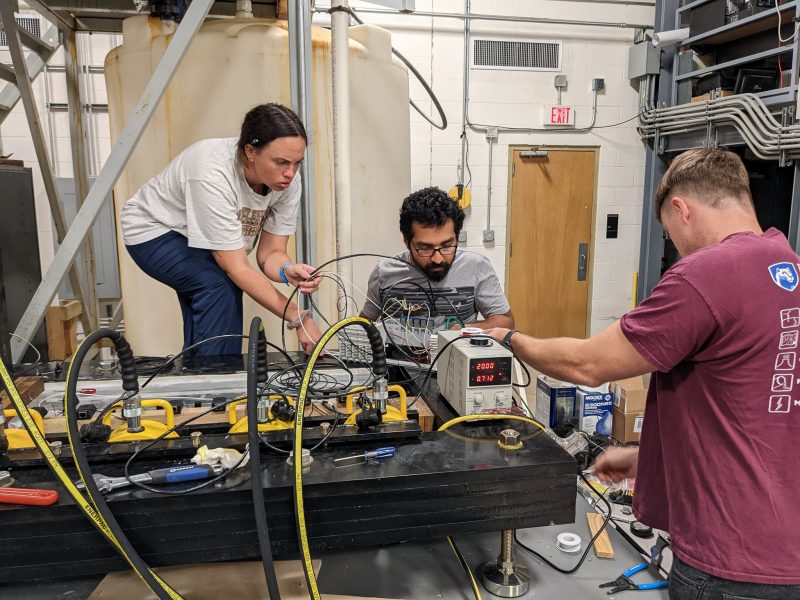Making Quakes in Austin
December 12, 2023

After months spent carefully combining black steel plates, delicate sensors and five hydraulic jacks into a device that mimics the sliding of tectonic plates past each other, a team of Jackson School of Geosciences researchers and graduate students successfully triggered an earthquake in the lab on Nov. 7, 2022.
It made an audible snap.
“Today was our first experiment, and — with nothing broken or catching fire — we were able to simulate an earthquake,” said Srisharan Shreedharan, who was a postdoctoral fellow at the University of Texas Institute for Geophysics (UTIG).
The experimental apparatus, known as the “Earthquake Machine,” includes a line of four hydraulic jacks that simulate the overlying pressure or load between the plates, which in this case are two blocks of acrylic plastic. A fifth jack piles shear stress onto the system, moving the acrylic “tectonic plates” past each other, millimeter by millimeter.
Earthquakes occur along the fault line — a quartz powder-filled gap between the acrylic blocks — when the pressure becomes too great. Sensors record each earthquake, including how far the fault slips, the amount of shear stress on the fault, change in volume within the fault during the quake, and seismic radiation.
The earthquakes the machine produces are tiny compared with real-world tremors, but they will give researchers invaluable information about the conditions that cause strong earthquakes and possible precursors warning of an impending quake.
Back to the Newsletter